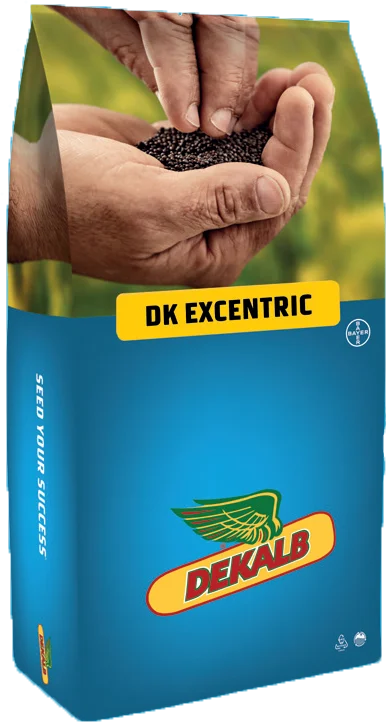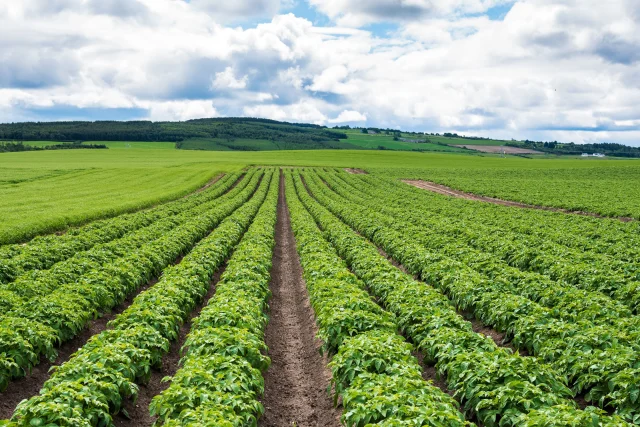Published on 2nd June 2025
Local Insights
Agronomy advice for East Anglian growers this summer

Current situation (12 May 2025)
Dry weather is starting to hamper crop development, especially in winter barley and spring crops and those in the east of the East Anglia region, which didn’t get much rain in late March / early April.
Septoria pressure in wheat crops approaching flag leaf timing is low, and with the chemistry available to control it currently is not much of a major concern.
There’s more concern about rusts, although you can walk some fields of even susceptible varieties without finding it, particularly in more central regions of East Anglia. But, for example, at our Field Days site at Walpole we’ve found plenty of yellow rust, across all varieties regardless of their R rating. Brown rust was also beginning to pop up, and with these warmer temperatures more of a concern.
With reports from NIAB and AHDB about varietal resistance possibly breaking down in some varieties with high resistance scores, it will need watching as once we have conducive weather it can spread very quickly.
1) Decisions for ear sprays
Writing this before most flag leaf sprays have been sprayed, let alone knowing what the weather has done in the intervening period before ear sprays makes it difficult to know what situation growers will be facing.
With the dry weather between T1 and T2 sprays, some growers may have opted for a more cheap and cheerful flag leaf spray. In that situation if the weather has changed or rust pressure significantly increased, crops may suddenly not be looking quite so clean and could justify higher fungicide spend at T3, or even earlier to get back on top of things.
If you haven’t applied SDHI-containing fungicides in two separate applications so far in the programme, you could use one at T3 to boost disease control in that situation. SDHI’s such as Aviator® Xpro® or Ascra® Xpro® will have a bit more intrinsic activity and control than azole plus strobilurin options.
The physiological benefits from bixafen could also help maintain green leaf area for longer, which will be beneficial for yield in what is shaping up to be perhaps an early harvest.
Even in very dry seasons it is still likely to be beneficial to protect crops with an ear spray, especially as brown rust risk increases in warmer weather. An azole plus strobilurin product, such as Firefly®, providing you haven’t used your two strobilurin applications previously, could be a decent option if it remains dry.
Timing for ear sprays will depend on disease target and when the T2 was applied. If Fusarium is the main concern, then it should be sprayed at early to mid-flowering, while if it is topping up foliar disease control then there is more flexibility depending on T2 timing.
2) Advice for OSR desiccation timing
If the dry weather continues, oilseed rape crops might ripen sooner than we might typically expect. Where that process is uneven across the field, using glyphosate to make sure the field is evenly ripe ahead of harvest might be useful.
To check whether crops are at the correct growth stage to be desiccated, pick a sample of 20 pods that is representative of the whole field, and check whether at least two-thirds of the seeds in at least 15 of the pods have turned from green to brown to be sure the crop is advanced enough to be sprayed off.
Going too early will potentially lead to yield loss and lower oil content, so it is important to get right. Remember seed crops shouldn’t be sprayed with glyphosate and to allow 14 days before harvesting.
3) Variety choice for autumn OSR crops
Finding decent break crops for the rotation is a struggle, which is a reason to consider oilseed rape, even with its establishment difficulties. It won’t suit every farm system and requires good management but it’s worth talking to your agronomist about whether it will work for you – growers who have persevered this season are being rewarded with some good-looking crops.
Varieties are improving with better disease resistance to key diseases light leaf spot and Phoma. In Bayer’s Dekalb portfolio virtually all the varieties have double Phoma resistance, good autumn and spring vigour and pod shatter resistance, which can be hugely important in some season.
Typically, we’re finding success from either drilling very early in August or even late July to establish crops before cabbage stem flea beetle build to damaging levels, or waiting until after peak flea beetle emergence to drill into lower pressure in September.
If you’re drilling earlier, good disease resistance is more important, while for later drilling, autumn vigour is crucial, although it’s also a characteristic to look for when drilling early – just maybe not quite as rapid.
Within our portfolio DK Excentric has a combination of traits that suit either drilling slot. It has good autumn vigour, with a prostrate growth habit, with decent disease resistance with a six for light leaf spot and seven for Phoma.
DK Extremus is more of a rapid variety making it perfect for later drilling windows, while still suitable for all but the very earliest window. It also gets away quickly in the spring – perhaps 5-7 days earlier than DK Excentric, which can be useful if flea beetle larvae or pigeons are problems.
Our candidate RL variety, CWH596 with turnip yellows virus and triple Phoma resistance might be one to look out for in trials this summer.
4) Watch out for Alternaria in potatoes
Late blight programmes are underway in potatoes, and hopefully growers are comfortable with how they plan to construct programmes amid various restrictions and guidelines for mixing and alternating modes of action.
Don’t forget about early blight – Alternaria – though, especially if you’re not using any or as much mancozeb this season – it can be very aggressive in crops if it gets out of control. Mancozeb, as well as activity against late blight, was also very helpful against early blight.
Varietal susceptibility will play a role – everyone knows Markies is susceptible – but check other varieties. Periods of wet and dry favour Alternaria development, making irrigated crops in the current weather pattern particularly at risk.
Without the backbone of mancozeb, a specific early blight fungicide might be needed with EuroBlight trials suggesting Caligula® could be the best option.
Containing fluopyram and prothioconazole, it provides multiple modes of action to form a nice base for control. It has a maximum individual dose of 0.5 L/ha and can be used three times after GS40, but no more than two consecutive applications should be made. Remember it also doesn’t control late blight so should be used in addition to your late blight programme.
5) Clarification of last application date for Sivanto® Prime
Aphids, thanks to some warmer weather, arrived earlier in sugar beet crops than forecast. Originally the forecast suggested it wouldn’t be until May, but they were spotted in April.
Combined with slow growth of the beet in the dry weather, it’s likely that all three products available will be needed.
One of those is using Sivanto® Prime, which has a latest use of BBCH GS19. In sugar beet this relates to nine or more true leaves unfolded, which allows flexible application during the use period.
Remember there is also a label requirement for the product not to be applied after 13 July to protect non-target arthropods and insects, which applies to all crops including potatoes, carrots and peas.
6) Investigate areas of poor grass weed control
June is the time of year when poor grass weed control starts to become obvious. Making a note of areas where control has been less than ideal, and investigating the reasons why, is important for putting in place plans for next season.
If there are areas of unexplained poor control, it could be worthwhile taking seed at the appropriate time for resistance testing, while also mapping areas of weeds to check whether they are getting worse or if new problems are emerging, is also good practice.
7) Head to our Bayer Field Day
We have a new venue for our Bayer Field Day in East Anglia this year – Pear Tree Farm in Walpole. Fortunately the food and refreshments have survived the change of venue, along with the familiar wheat variety plots, fungicide trials and various other talking points.
We’d be delighted to see you on Thursday 3 July from 10am with the last tour at 3pm.
-----
Ascra® Xpro® contains bixafen, fluopyram and prothioconazole. Aviator® Xpro® contains bixafen and prothioconazole. Caligula® contains fluopyram and prothioconazole. Firefly® contains fluoxastrobin and prothioconazole. Sivanto® Prime contains flupyradifurone. Ascra®, Aviator®, Caligula®, Firefly®, Sivanto® and Xpro® are registered Trademarks of Bayer.
All other brand names used are Trademarks of other manufacturers in which proprietary rights may exist. Use plant protection products safely. Always read the label and product information before use. Pay attention to the risk indications and follow the safety precautions on the label. For further information, including contact details, visit www.cropscience.bayer.co.uk or call 0808 1969522. © Bayer CropScience Limited 2025







